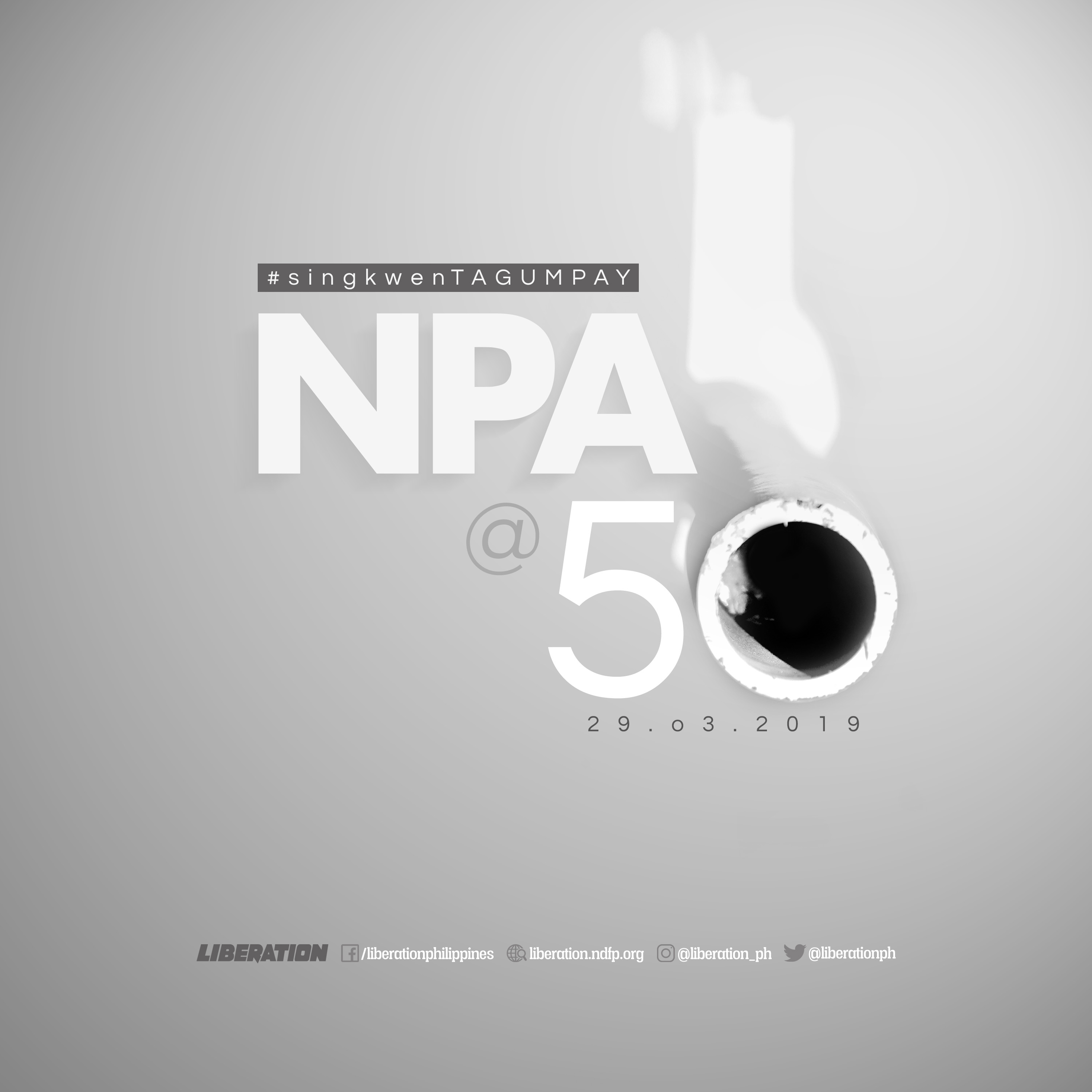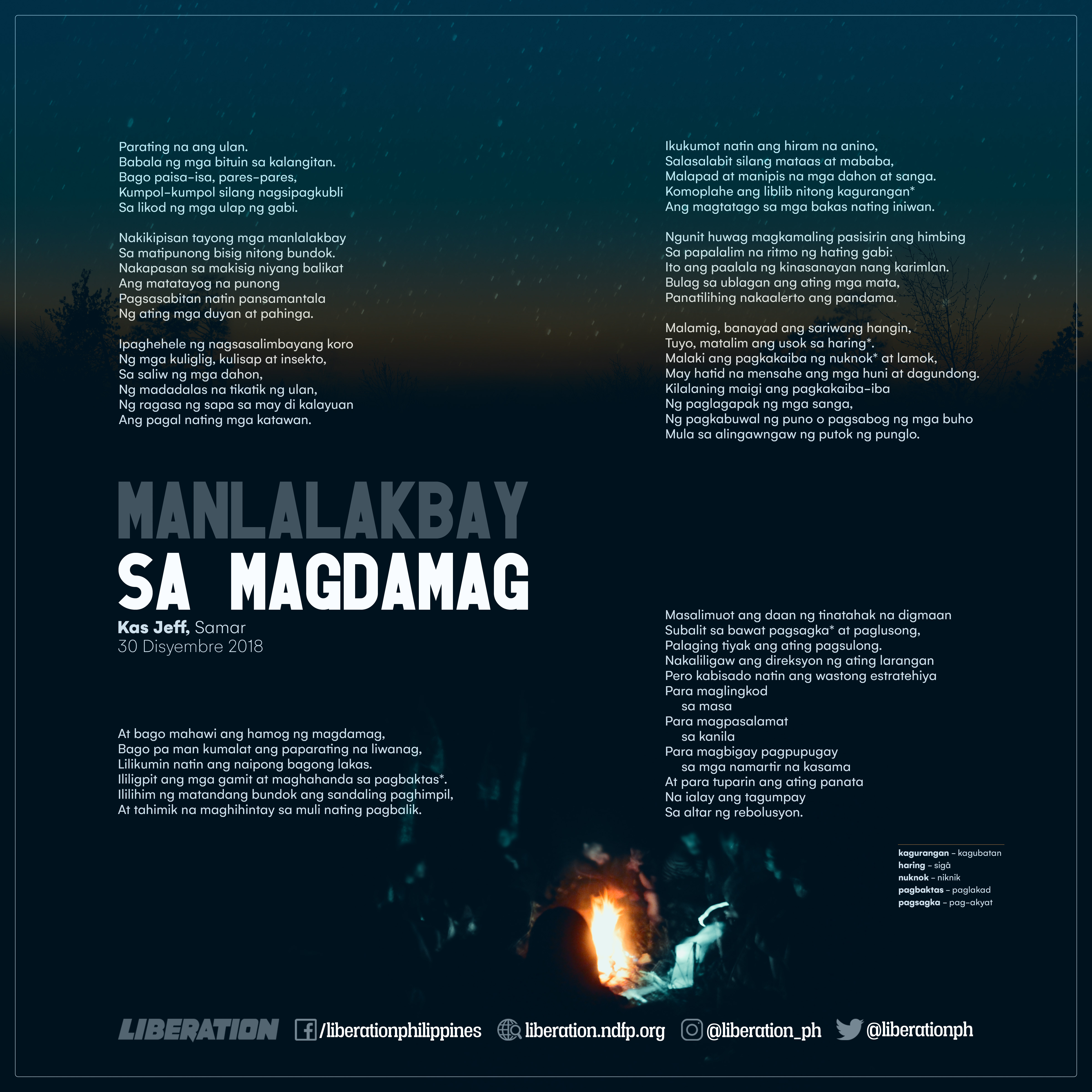(Untitled)
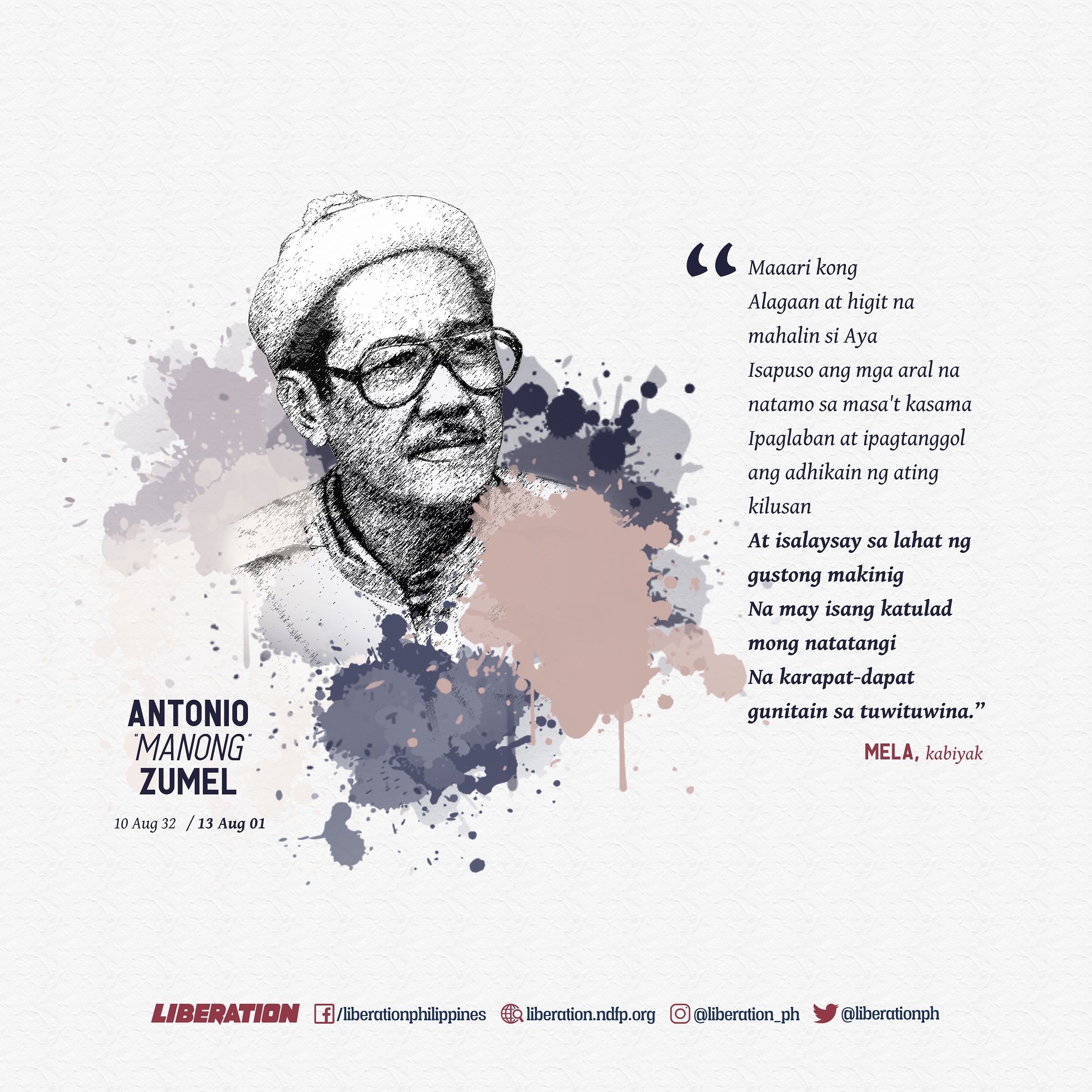
Paano ko bubuhayin ang alaala
Ng aking kaibigan, asawa, ama ng aking anak
aking kasama, guro, at mahigpit na kritik,
Paano ko hahaplusin ang mga larawang
Iginuhit ng aming makukulay na karanasan
sa piling ng masa
Paano ko sisimulang
Buklatin ang libu-libong pahina
Ng mga sulatin ng pag-ibig, pagkalinga,
tampuhan at debate,
Kakantahin ko ba ang kundiman ng manggagawa
Sasayaw sa tugtog ng “Easy to Love” ni Cole Porter
Magsisindi ng mababangong kandila at
Makikinig sa malalambing na awitin
Mamamasyal sa Oude Graacht at uupo sa tabi ng kanal
Maaari kong gawin ang lahat ng ito
Pero iba na ang aking mararamdaman
Pagkat ang mga ito ay pandalawahan
Sa panaginip isasakatuparan
Maaari kong
Alagaan at higit na mahalin si Aya
Isapuso ang mga aral na natamo sa masa’t kasama
Ipaglaban at ipagtanggol ang adhikain ng ating kilusan
At isalaysay sa lahat ng gustong makinig
Na may isang katulad mong natatangi
Na karapat-dapat gunitain sa tuwituwina.
– Mela
=====
This untitled poem was written by Mela, wife of revolutionary hero Antonio Zumel, after his death
First published
Liberation Vol. XXX No. 3 July-September 2003
#TonyZumel
#Tribute
#RevolutionaryNotTerrorist
#ServeThePeople
#ServeTheRevolution
—–
VISIT and FOLLOW
Website: https://liberation.ndfp.info
Facebook: https://fb.com/liberationphilippines
Twitter: https://twitter.com/liberationph
Instagram: https://instagram.com/liberation_ph

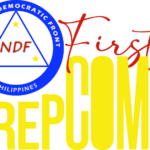
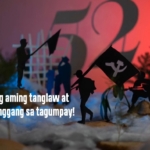
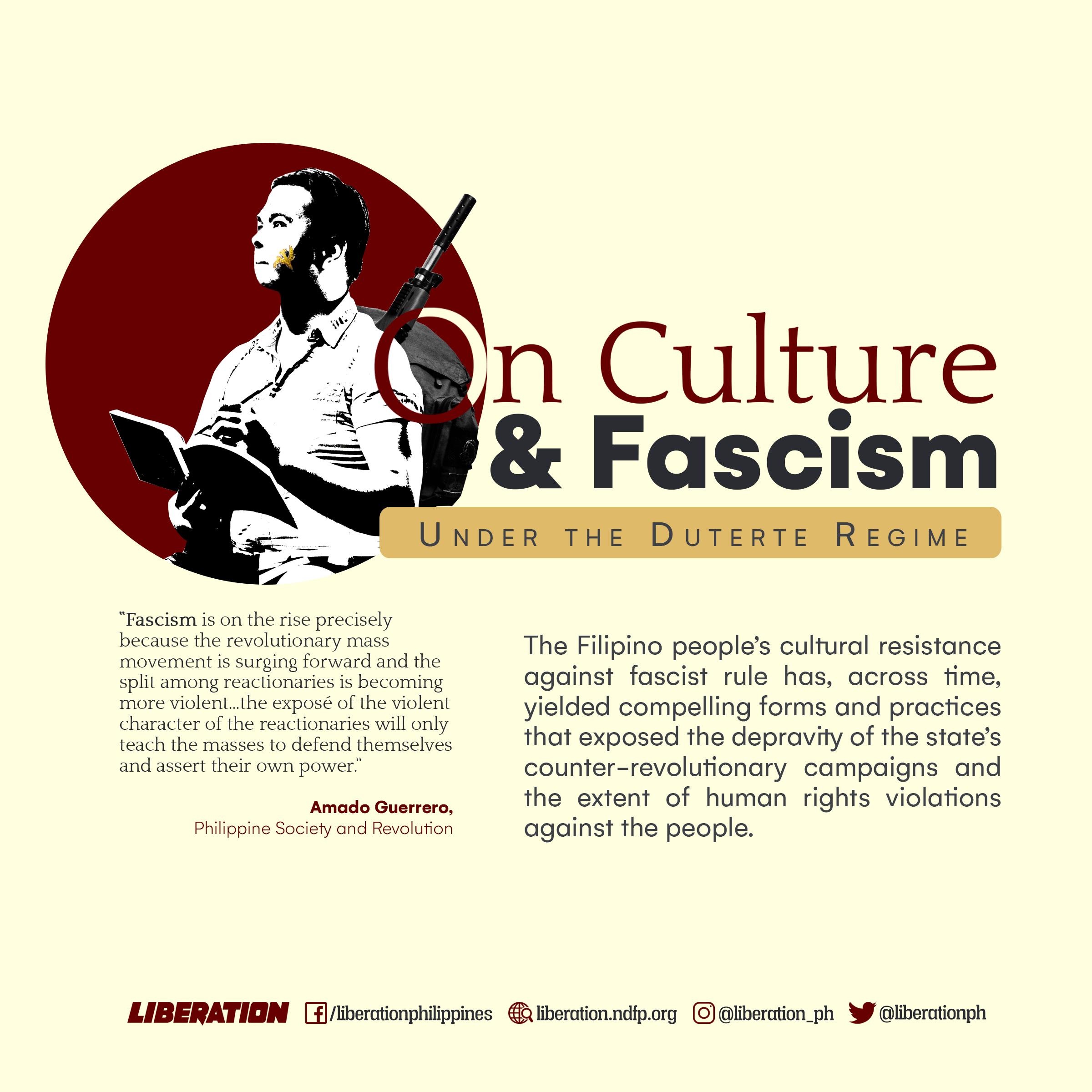
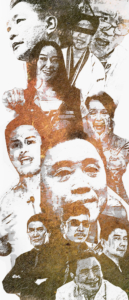 by Alejo Nicolas
by Alejo Nicolas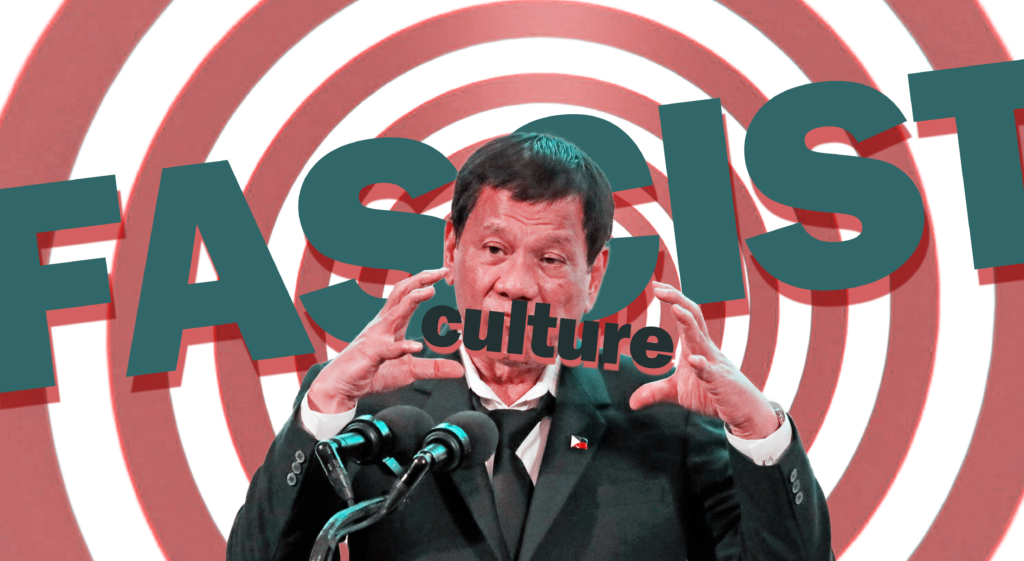 Signs of tyranny
Signs of tyranny Art and culture for the anti-fascist struggle
Art and culture for the anti-fascist struggle


